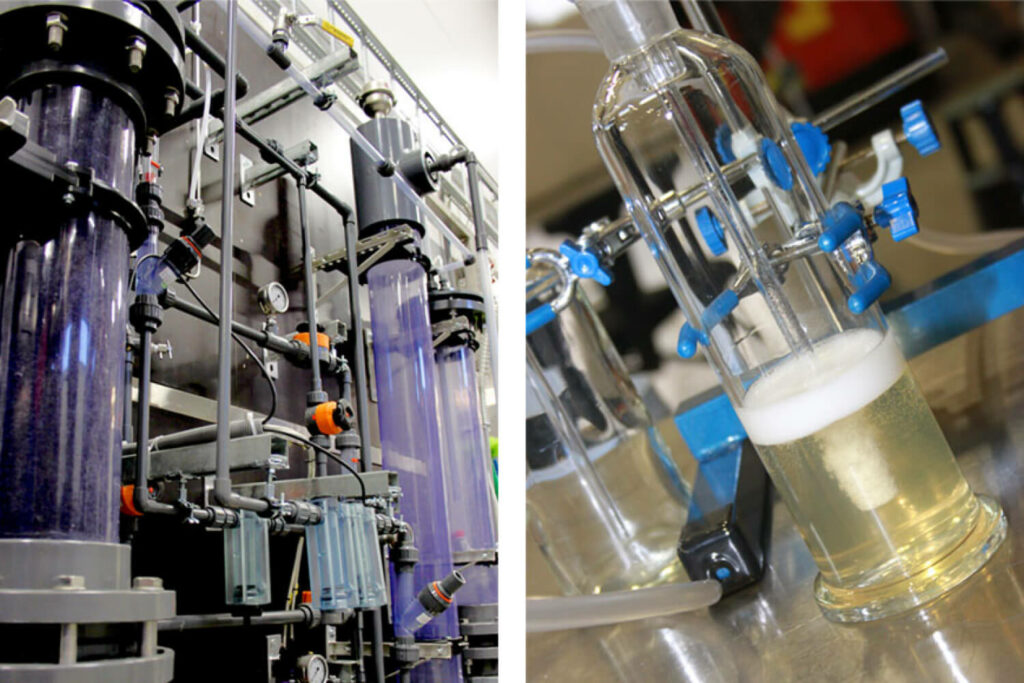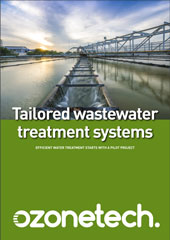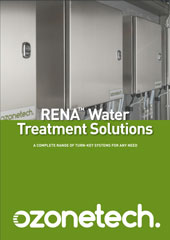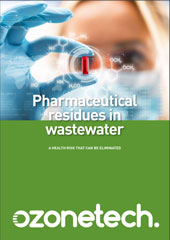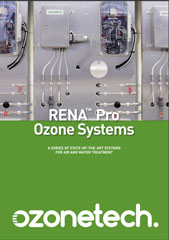PFC removal
Premium Treatment Removing PFC, PFAA, PFOS, & PFOA

What is PFC, PFAA, PFOS and PFOA?
Perfluorinated compounds (PFCs) such as Perfluorinated alkyl acids (PFAA), are diverse groups of synthetic chemical structures with unique properties, such as thermal stability and the ability to create smooth surfaces which repel water, oil and dirt. This makes PFCs useful components in a wide variety of consumer and industrial products, including preservatives, lubricants, paints, foams, non-stick cookware, food packaging, waterproof clothing, fabric stains protectors and firefighting foams. PFOA and PFOS are among the most known compounds, customarily defined as perfluorinated molecules containing eight fluorinated carbon atoms.
Emerging pollutants
Large volumes of PFCs have been produced since the 1950s and in recent years production has shifted more towards short-chain compounds and perfluoroether carboxylic and sulfonic acids, which already has been reflected in environmental waters. However, these specific compounds represent only a fraction of the PFASs marketed globally. Some production has also been replaced by other highly fluorinated compounds such as fluorotelomer alcohols that can slowly degrade to PFOA.
The high production volume of PFCs has led to widespread distribution of the substance in the environment, particularly in water where they are most readily transported. The chemical stable properties combined with PFCs solubility in water have contributed to the detection of PFASs throughout the aquatic environment, including in surface waters, wastewater and drinking water.
PFOA has a negative effect on the reproductive organs and is suspected to be carcinogenic to humans and is also rated as very persistent and very bioaccumulative (vPvB) and therefore tacked on the EU candidate list of Substances of Very High Concern.
PFCs are recognized by an increasing number of members of the science community as emerging environmental pollutants because of their chemical stability and toxic effects combined with their ubiquitous occurrence in the environment, biota and humans. The direct exposure pathways of these chemicals to humans are somewhat unclear and concerns for PFC-polluted water sources have risen dramatically in recent years in the eyes of the public around the world. Tap water and bottled water are two potential sources of PFCs, explaining part of their occurrence in human blood.
Treating PFCS
The chemically very stable compounds of PFCs complicate any potential decomposition process of the substance. Various methods have been investigated in efforts to decompose and/or remove PFCs from polluted water, and strong oxidizing agents need to be used.
In efforts to reach a sufficiently high oxidation potential a combination of different Advanced Oxidation Process (AOP) techniques must be considered, for example, a combination of ozone and catalyzed hydroxyl formation. Further complications include the matrix of the sample to be treated.
For example, water rich in organic particles or TOC (Total Organic Content) cause problems for the PFAA removal due to the tendency of the oxidizing agent to react primarily with less stable organic compounds.
It is of environmental and social importance to effectively decompose and remove PFCs in drinking water treatment.
Solutions
PFC compounds can be reduced, degraded or completely removed by various methods as listed below and in many cases a combination of techniques is the ultimate solution to solve the problem.
Oxidation
To break down PFC compounds in water one typically needs stronger than “ordinary” oxidants.
Advanced oxidantion techniques, combining different oxidants, have proven to be effective with the right mixing technique. A combination, of for example, ozone and hydrogen peroxide (H2O2) and/ or special catalysts raises the oxidation potetional which enables the degradation of PFCs.
Reverse osmosis
Reverse osmosis (RO) is a simple and traditional purification method already used in many water treatment systems.
Our RENA RO systems can remove the contaminants before it is delivered to the households in the affected municipalities. The reverse osmosis technology, which is used, efficiently separates salts from the water and makes this method suitable for that reduction of PFAA-pollutants in drinking water.
Ozonetech offers a variety of state-of-the-art turn-key water treatment systems based on our own ozone technology combined with our in-house developed AOP technology to decompose and remove PFCs in water.
Pilot project
Reducing or eliminating PFCs is a complex task and requires a tailored full-scale solution.
The design process starts with our engineers’ pilot study resulting in a setup including possible critical parameters and best available technologies (BAT) to achieve the optimal process design. By conducting multiple pilot-runs and at the same time incrementally adjusting each parameter of the system individually.
Our engineers determine the optimal design for a full-scale system. Water is sampled throughout the whole pilot process and submitted to a third party lab for analysis to verify the results.
Read more about Pilot projects & Tailored systems and our AOP System RENA Vitro
